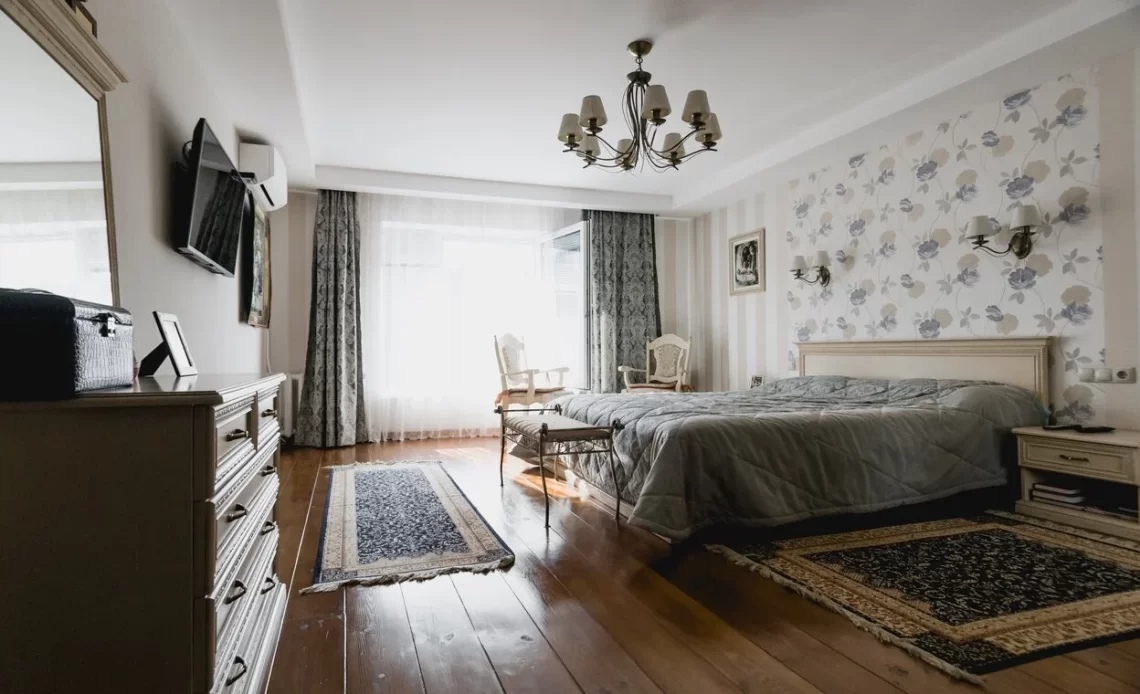
Table of Contents
Introduction
Your home is more than just a living space; it’s a reflection of your personality, style, and creativity. Elevating your interior design game can transform your dwelling into a chic haven that exudes elegance, comfort, and uniqueness. Whether you’re a seasoned design enthusiast or a beginner looking to spruce up your living space, this article will guide you through essential tips and ideas to create a truly chic dwelling that captivates the senses and elevates your lifestyle.
Discover Your Design Aesthetic for Chic Dwelling
When it comes to transforming your living space into a chic dwelling that exudes elegance and personality, one of the foundational steps is to uncover your unique design aesthetic. Your design aesthetic is a reflection of your taste, personality, and the ambiance you wish to create within your home.
Understanding Your Preferences
Think of your design aesthetic as your design DNA – it’s the underlying theme that ties together all the elements in your home, creating a harmonious and inviting atmosphere. To begin with the conversion of your living space into chic dwelling, take a moment to contemplate the styles and themes that resonate with you on a personal level. Do you find yourself drawn to the clean lines and simplicity of minimalism? Or perhaps you’re captivated by the timeless allure of vintage charm? Maybe you’re more inclined towards the sleek and contemporary vibes of modern design, or you revel in the eclectic mix of various styles.
Consider your lifestyle, interests, and the emotions you want your space to evoke. If you enjoy nature and tranquility, a design aesthetic inspired by nature and organic elements might resonate with you. If you’re a lover of art and culture, an eclectic approach that blends diverse influences could be your preference. Understanding your preferences is the first step in defining your design aesthetic and setting the tone for your chic dwelling.
Research and Inspiration
Once you’ve identified the design styles that speak to you, it’s time to gather inspiration. Dive into the world of interior design by exploring magazines, design books, websites, and social media platforms. Instagram, Pinterest, and design blogs are treasure troves of visual inspiration where you can discover a plethora of design ideas, color palettes, furniture arrangements, and decorative accents.
As you explore, take note of the elements that catch your eye and resonate with your design vision. Pin or save images that evoke the atmosphere you wish to create in your own home. Look for recurring themes, colors, patterns, and textures that align with your design aesthetic. Pay attention to the small details that make each style unique – whether it’s the warm and cozy textiles of bohemian design or the sleek and polished surfaces of modern interiors.
Creating Your Mood Board
A mood board is a powerful tool that allows you to visually compile and organize your design ideas. It serves as a tangible representation of your design aesthetic and provides a clear roadmap for curating your chic dwelling. Start by selecting images, swatches, and samples that capture the essence of your preferred design style. Arrange these elements on a physical board or create a digital version using online tools.
Your mood board should encompass a range of elements, including color swatches, fabric samples, furniture pieces, decorative accessories, and even architectural details. As you assemble your mood board, you’ll begin to see how these individual elements harmonize to create a cohesive design narrative. This visual reference will be an invaluable resource as you make decisions about paint colors, furniture selections, and overall design direction.
Master the Art of Color and Texture
In the realm of interior design, the transformative power of color and texture cannot be overstated. These two elements hold the key to crafting a chic dwelling and ambiance that resonates with elegance, comfort, and visual intrigue.
The Symphony of Color
Color is the language of emotion in interior design. It has the remarkable ability to influence our feelings, perceptions, and even our behavior within a space. When aiming to cultivate a chic dwelling and ambiance, your color choices become vital tools in setting the tone. Start by considering a color palette that aligns with your design aesthetic – a palette that speaks to your personality and resonates with the atmosphere you wish to create.
While neutrals such as whites, grays, and beiges provide a timeless foundation, they also offer the flexibility to explore various color harmonies. Introducing pops of muted or bold hues can infuse vitality and depth into your design. Picture a serene living room adorned with neutral-toned furniture and accented by deep navy throw pillows or a blush-colored armchair. These strategic color injections create points of interest that enliven the space without overwhelming it.
Texture – The Sensory Tapestry
Textures are the tactile storytellers of your interior design narrative. They invite touch and engage the senses, adding layers of dimension and richness to your space. Imagine a room that blends sleek surfaces with plush textiles, rough-hewn wood with smooth glass. This orchestration of textures creates a symphony that resonates on both visual and sensory levels.
To master the art of texture, consider integrating diverse materials into your design scheme. Play with contrasting elements, like pairing the sleekness of a glass coffee table with the warmth of a wool rug. Embrace fabrics that vary in touch and appearance – from the softness of velvet cushions to the natural feel of woven jute accessories. Each texture you introduce contributes to a dynamic and captivating composition.
The Harmonious Balance for Chic Dwelling
Achieving a harmonious balance between color and texture is the cornerstone of a successful interior design endeavor. Your color choices should complement and enhance the textures present, and vice versa. If you opt for a neutral color palette, textures can be your tool to create intrigue and prevent monotony. In contrast, bolder color choices can be harmonized with subtler textures for a cohesive look.
Moreover, the function of each space should guide your color and texture decisions. Bedrooms, places of rest and tranquility, might benefit from softer colors and plush textures, while communal areas like living rooms can accommodate bolder color choices and more dynamic textures. It’s about curating an environment that feels right both visually and experientially.
Furniture – Quality Over Quantity
In the symphony of interior design, furniture takes center stage as the anchors of functionality, style, and comfort. When crafting a chic dwelling that exudes sophistication, the principle of “Quality Over Quantity” becomes a guiding beacon. It’s not about amassing an abundance of furnishings; it’s about curating a collection of pieces that stand the test of time and contribute to an environment of enduring elegance.
Prioritizing Lasting Quality
In a world often characterized by fleeting trends and fast-paced consumption, the adage “quality over quantity” gains a newfound significance. When it comes to furniture, investing in pieces of lasting quality can be a transformative decision. They are crafted with attention to detail and superior materials, resulting in a level of craftsmanship that resonates with authenticity and permanence. While it might require a more substantial initial investment, the dividends pay off in durability, visual appeal, and the overall experience of your space.
The Timeless Aesthetic
Chic dwelling spaces are marked by a timeless aesthetic that transcends passing trends. When selecting furniture, prioritize pieces that embody this timeless quality. Opt for designs with clean lines, uncluttered forms, and an inherent sense of balance. These attributes create a harmonious foundation that accommodates various design styles and evolves gracefully over time.
Classic silhouettes often serve as the backbone of a chic interior. Their simplicity and versatility enable them to seamlessly integrate into a variety of design themes. A well-designed sofa, for instance, can anchor a living room, serving as a canvas for your creativity with throw pillows, textiles, and accents that reflect your personal style.
Cohesion in Design
Harmony is the heartbeat of successful interior design, and furniture plays a pivotal role in achieving this cohesion. When each piece in your space adheres to a consistent design language, the result is a unified visual narrative that radiates sophistication. Opt for furniture that aligns with your design aesthetic – whether it’s mid-century modern, traditional, industrial, or any other style that resonates with you.
Coherence extends beyond individual pieces. Consider how your furniture arrangement flows within the room and interacts with other design elements. Space planning and proportion are key considerations that contribute to an overall sense of balance and elegance.
The Intrinsic Comfort Factor
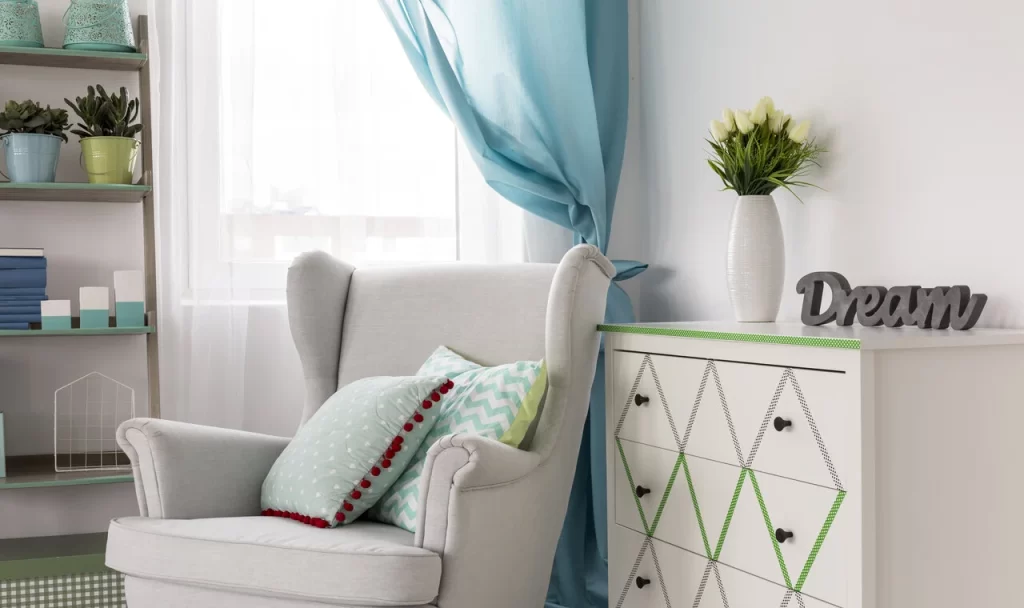
Beyond aesthetics, comfort reigns supreme in the realm of furniture selection. Chic living spaces are not only visually appealing but also spaces where relaxation and well-being flourish. Prioritize pieces that offer ergonomic support and a sense of coziness. A comfortable armchair or a well-crafted dining set can create a welcoming atmosphere that encourages gathering and relaxation.
Statement Pieces and Focal Points
In the art of interior design, creating a space that captivates the senses and tells a compelling story is an aspiration shared by many. This is where the concept of “Statement Pieces and Focal Points” steps into the spotlight, offering a transformative approach to curating a chic dwelling that exudes personality and sophistication. These design elements have the power to breathe life into your interiors, drawing the eye, evoking emotions, and sparking conversations.
Crafting Visual Centerpieces
Imagine entering a room that immediately commands your attention, a space where your gaze is irresistibly drawn to a single point of interest. This is the magic of a well-chosen statement piece or focal point. Whether it’s a captivating piece of artwork, an exquisite chandelier suspended from the ceiling, or an intricately designed piece of furniture, these elements function as visual centerpieces that anchor the room and set the tone for the entire space.
The Art of Curated Contrast
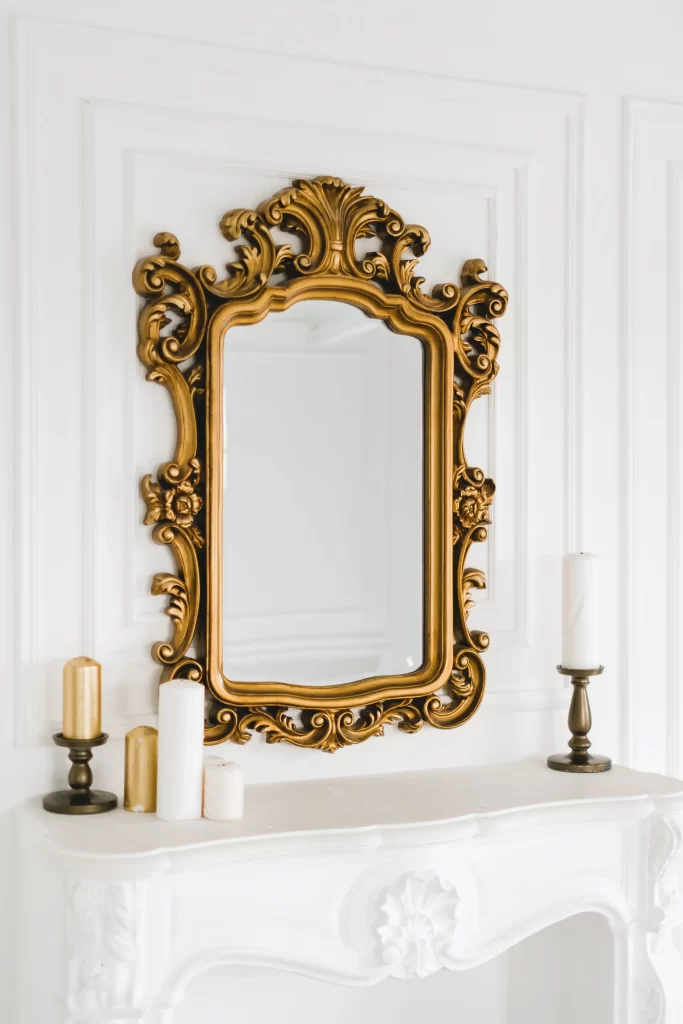
Statement pieces and focal points are not just about aesthetics; they play a vital role in curating a sense of contrast and intrigue within your interiors. By juxtaposing the extraordinary with the ordinary, you create a dialogue between design elements that elevates the overall ambiance. For instance, placing an ornate, antique mirror against a minimalist wall enhances both the mirror’s intricacy and the wall’s simplicity.
These elements allow you to play with the principles of scale, color, and texture. An oversized, bold-colored sofa can dominate a room, while a carefully selected sculpture can invite touch and exploration. By embracing the interplay between statement pieces and other design elements, you cultivate a dynamic environment that engages the senses and sparks curiosity.
Creating Conversation Starters
Your chic dwelling is an extension of your personality and experiences, and statement pieces and focal points enable you to infuse your space with narratives and conversations. A unique item from your travels, a piece of art that resonates with your values, or an heirloom that carries history can all become captivating conversation starters. These elements enrich your space by sharing stories and creating connections with those who enter.
Strategic Placement and Balance
While the allure of statement pieces and focal points is undeniable, their placement requires a thoughtful approach. These elements should enhance the space rather than overwhelm it. Consider the layout and proportions of your room. A grand chandelier can command attention in an entryway, while an eye-catching painting can anchor a dining area.
Remember, balance is key. Too many competing focal points can lead to visual chaos, while too few can result in monotony. Allow your statement pieces to shine by giving them room to breathe while maintaining a cohesive narrative that guides the eye smoothly through the space.
Functional and Stylish Storage Solutions
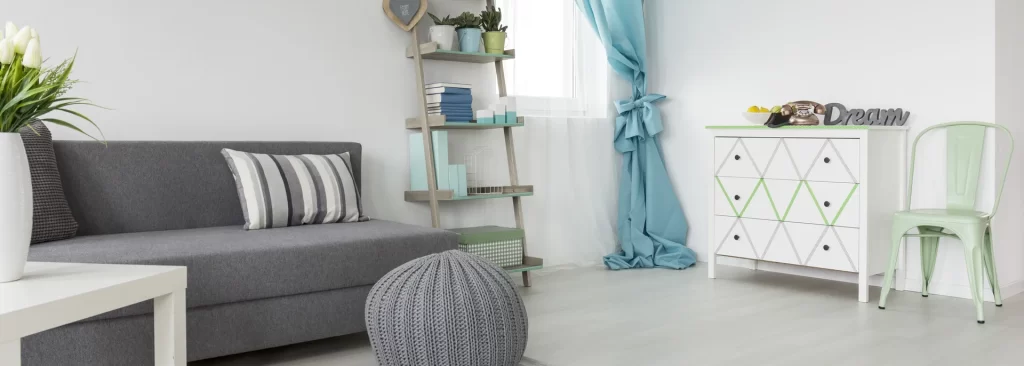
In the pursuit of a chic and refined living space, one must navigate the delicate equilibrium between aesthetics and functionality. This is where the concept of “Functional and Stylish Storage Solutions” emerges as a guiding principle. A clutter-free environment is essential to cultivating an atmosphere of sophistication, allowing your design choices to shine while promoting a sense of tranquility and order.
Harmony Between Form and Function
Imagine a room that exudes elegance, where every element is meticulously curated to create a seamless visual narrative. Now imagine that same room cluttered with belongings, its beauty obscured by disarray. This contrast underscores the importance of functional storage solutions. While the aesthetics of your design choices are essential, ensuring that your space remains organized and clutter-free is equally vital.
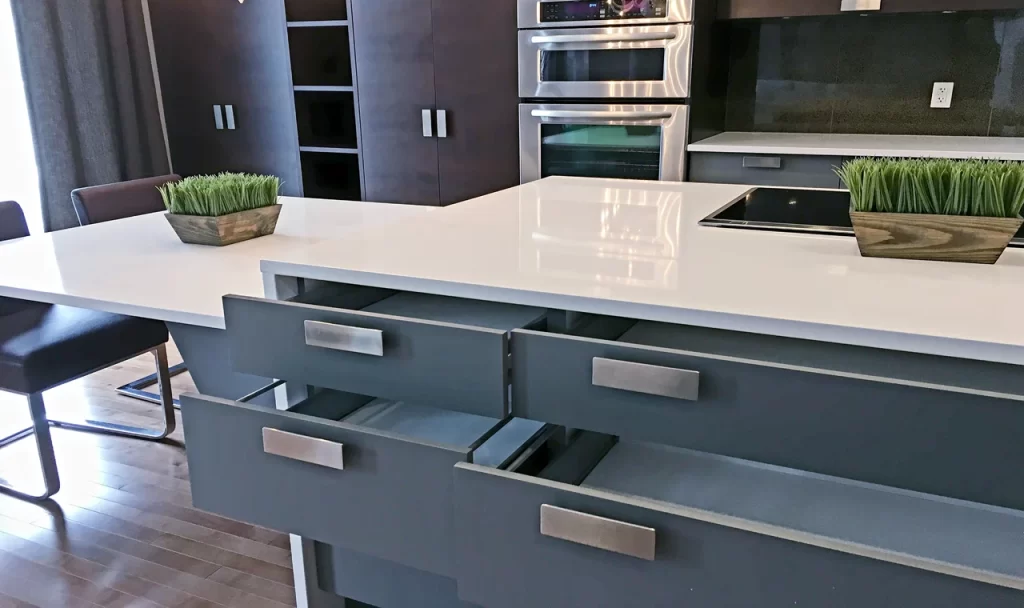
Functional storage seamlessly merges form and function. It enhances the overall design aesthetic while serving a practical purpose. This principle is especially crucial in shared spaces like living rooms, bedrooms, and kitchens, where items need to be readily accessible yet neatly concealed.
Open Shelving – A Stylish Display
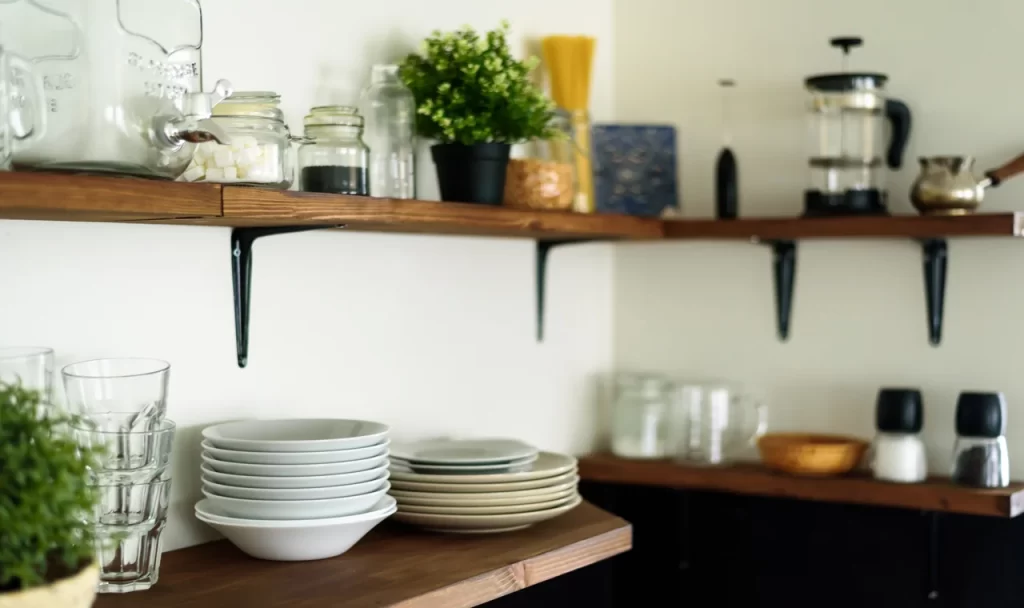
Open shelving is a versatile storage solution that allows you to showcase your belongings while maintaining an organized atmosphere. Consider incorporating open shelves in your living areas to display curated collections of books, decorative items, and artwork. These shelves not only add visual interest but also invite guests to engage with the curated pieces, fostering an environment of creativity and conversation.
Remember, open shelving requires a sense of curation to prevent it from becoming cluttered. Choose items that align with your design aesthetic and rotate them periodically to keep the display fresh and engaging.
Concealed Storage – Aesthetic Tidiness
While open shelving offers visual engagement, concealed storage options play a pivotal role in maintaining a clean and chic aesthetic. Cabinets, drawers, and built-in storage solutions allow you to tuck away items that are necessary but may disrupt the visual harmony if left in plain sight. Consider incorporating concealed storage in areas like entryways, bedrooms, and bathrooms.
Modern furniture often integrates concealed storage, such as ottomans with hidden compartments or coffee tables with drawers. This approach maintains a clean exterior while providing ample space to stow away items like blankets, electronics, or personal belongings.
Decorative Baskets – A Blend of Form and Function
Decorative baskets are the unsung heroes of chic interior design. They seamlessly blend form and function by offering a stylish means of corralling clutter. Place baskets on shelves, under tables, or in closets to store items like magazines, blankets, toys, or even shoes. The natural textures of baskets can add warmth and depth to your space while simultaneously keeping it tidy.
Achieving Balance
While functional storage solutions are designed to maintain order, they need to align with your design aesthetic to create a seamless visual flow. Choose storage solutions that complement the overall style of the room. For instance, opt for sleek and minimalist cabinets in contemporary spaces, or embrace vintage-inspired baskets in rustic environments.
Play with Patterns and Details
In the tapestry of interior design, patterns and details are the threads that weave together a story of vibrancy, personality, and sophistication. The concept of “Play with Patterns and Details” encourages you to explore a world of visual excitement and intricate charm. By incorporating patterns in the form of textiles, wallpapers, and accessories, and attending to small yet impactful details like decorative molding and hardware, you can elevate your living space to a new level of visual and tactile delight.
The Power of Patterns
Patterns possess an innate ability to infuse life and energy into your interiors. They break the monotony of solid colors, adding layers of texture and visual interest. From the elegance of classic stripes to the whimsy of florals and the boldness of geometric shapes, patterns can cater to a wide range of design aesthetics. When skillfully integrated, they bring vitality and dynamism to your space.
Accentuating with Textiles
One of the simplest ways to introduce patterns is through textiles. Consider accent pillows adorned with intricate designs or throws featuring captivating motifs. These elements can serve as focal points or tie the design of a room together. Play with different scales and colors to find patterns that resonate with your aesthetic.
Rugs are another versatile canvas for patterns. A patterned rug can anchor a room, define spaces, and add warmth underfoot. Whether you opt for a classic oriental design or a contemporary abstract pattern, rugs provide an opportunity to introduce visual depth and narrative.
Wallpapers that Tell Stories
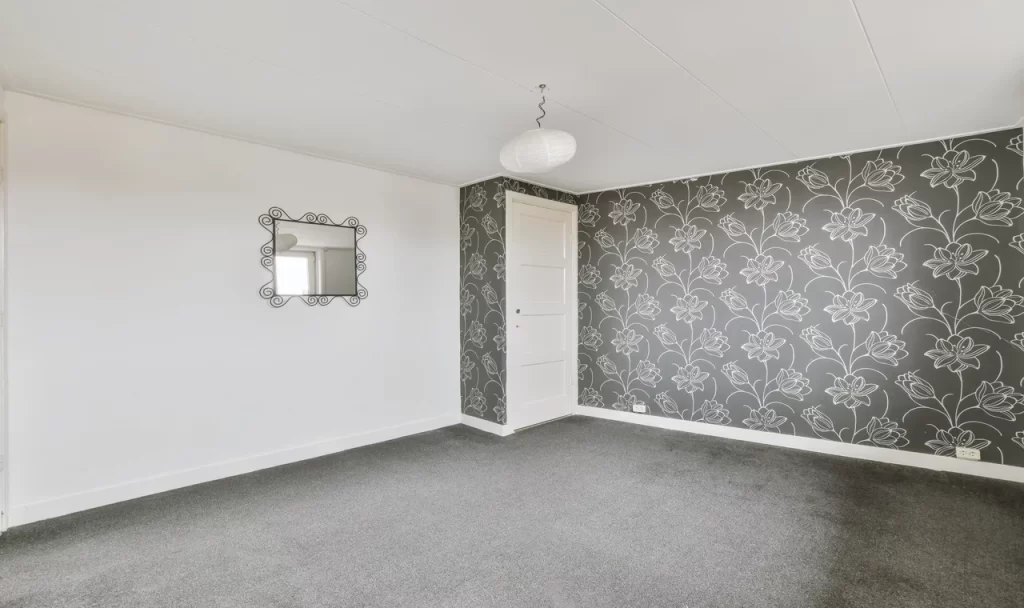
Wallpapers offer a creative avenue to envelop your space in patterns and themes. From bold prints to subtle textures, wallpapers can set the mood for an entire room. A feature wall adorned with an intricate pattern can become a captivating focal point. Remember to balance the scale of patterns with the dimensions of your space – smaller patterns work well in compact rooms, while larger patterns can make a grand statement in larger areas.
The Art of Cohesion
While the allure of patterns is enticing, achieving cohesion is essential to prevent visual chaos. Strive for a balance between patterns and solid colors. If one area features a prominent pattern, allow other elements in the room to be more subdued. This balance maintains a harmonious visual flow that doesn’t overwhelm the senses.
Elevating with Details
In the pursuit of chic design, intricate details play a pivotal role. Decorative molding and trim, for instance, can transform a plain wall into a work of art. Crown molding, chair rails, and wainscoting introduce architectural interest that elevates the sophistication of your space. Pay attention to hardware choices as well – elegant handles, knobs, and fixtures can be the small yet impactful details that tie your design together.
Luminous Lighting Design
In the realm of interior design, lighting is the transformative force that breathes life and atmosphere into your living spaces. The concept of “Luminous Lighting Design” acknowledges the power of light to shape the mood, ambiance, and overall experience within your chic dwelling. By thoughtfully integrating various lighting sources – from ambient to task and accent lighting – and selecting fixtures that resonate with your design aesthetic, you can orchestrate a symphony of illumination that elevates the elegance of your interiors.
Setting the Mood
Imagine a room aglow with soft, warm light that welcomes you with open arms. Now envision the same room illuminated with bright, focused light that invites productivity and focus. Lighting has the remarkable ability to influence our emotions, perceptions, and interactions within a space. Whether you’re aiming for coziness, vibrancy, or relaxation, the right lighting choices can craft an ambiance that resonates with your intentions.
Diverse Lighting Sources
To achieve a luminous lighting design that captures the essence of elegance, consider integrating a variety of lighting sources:
Ambient Lighting
This is the foundational lighting that creates a general illumination throughout a room. Ceiling-mounted fixtures like chandeliers or pendant lights can serve as primary ambient lighting sources. Consider their design and scale – an elegant chandelier can add a touch of opulence to a dining area, while a pendant light with clean lines complements a modern aesthetic.
Task Lighting
Task lighting is essential for specific activities such as reading, cooking, or working. Floor lamps, table lamps, and under-cabinet lighting are examples of task lighting sources. Their placement should be strategic – a well-positioned table lamp can enhance a reading nook, while under-cabinet lighting brightens kitchen countertops.
Accent Lighting
Accent lighting adds drama and dimension by highlighting specific design elements, artworks, or architectural features. Picture lights, wall sconces, and adjustable track lights are excellent choices for accent lighting. They draw attention to focal points, creating visual interest and depth.
Fixture Selection – Aesthetic Illumination
The fixtures you choose are not just functional; they’re design elements that contribute to the overall aesthetic of your space. When selecting lighting fixtures, consider their design in relation to your interior style. A sleek, minimalist pendant light might be the perfect complement to a contemporary living room, while a vintage-inspired chandelier could enhance a classic dining area.
Fixtures also influence the quality of light emitted. Warm, incandescent bulbs create a cozy atmosphere, while cooler LED bulbs offer a modern and energy-efficient option. Remember that the color temperature of the bulbs can impact the ambiance you’re aiming to achieve.
Dimmers – The Art of Versatility
Dimmers are a lighting designer’s best friend. They provide the opportunity to adjust the intensity of light according to your mood and activity. A dimmed light can create a relaxed ambiance for an intimate dinner party, while brighter light is ideal for tasks that require focus. The ability to control the level of illumination enhances the versatility of your lighting design and allows you to adapt your space to various occasions.
Greenery and Natural Elements
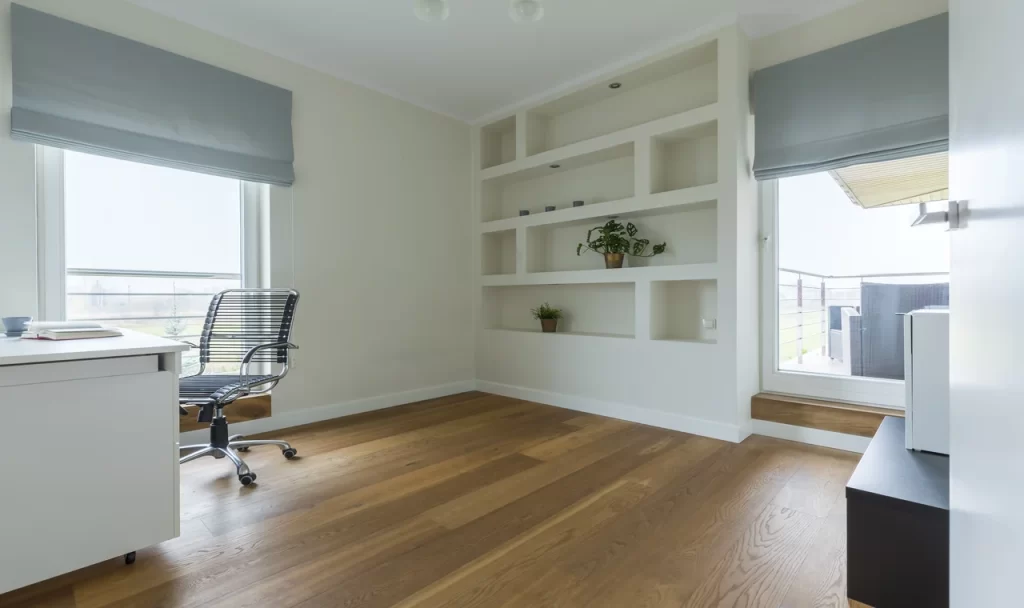
Nature has a remarkable way of nurturing our souls and soothing our senses. The concept of “Greenery and Natural Elements” invites you to channel the tranquility and vibrancy of the natural world into your chic dwelling. By introducing indoor plants and incorporating wood, stone, and other natural materials, you can create an environment that not only rejuvenates your space but also uplifts your spirit.
The Power of Greenery
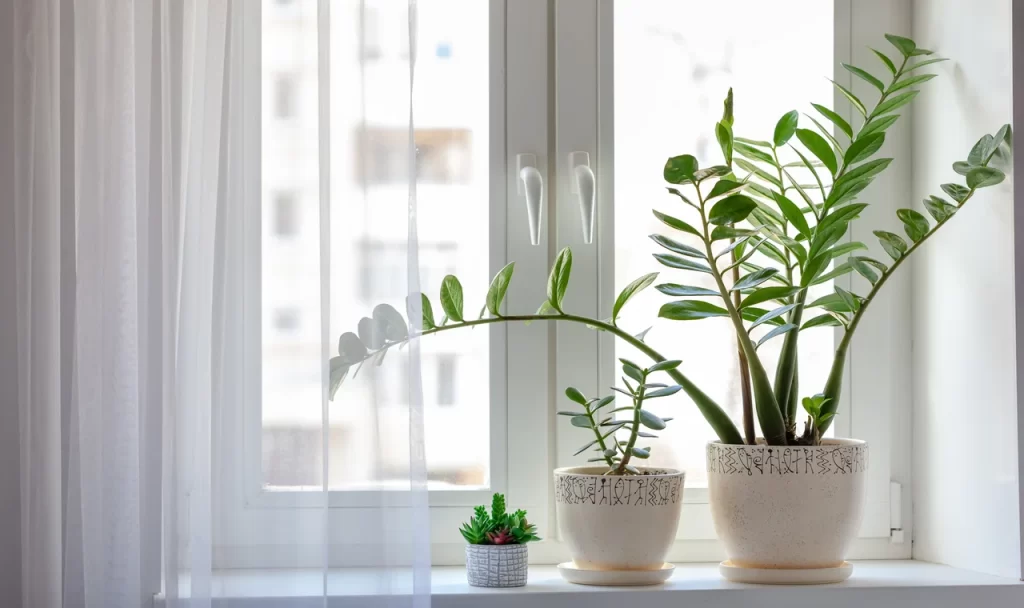
Imagine the gentle rustling of leaves, the calming scent of earth, and the vibrant hues of lush foliage. Indoor plants offer more than just visual appeal; they breathe life into your spaces and create a connection to the natural world. Beyond their aesthetic contribution, plants have the incredible ability to purify the air by absorbing toxins and releasing oxygen, enhancing the overall well-being of your environment.
Whether you opt for towering palms, cascading ivy, or sleek succulents, indoor plants inject vitality and serenity into your chic dwelling. They soften the lines of architectural features, add dynamic layers of texture, and foster a sense of renewal and balance.
Natural Materials – Touches of Authenticity
The beauty of nature lies in its authenticity, and incorporating natural materials into your interior design allows you to infuse your space with this authentic essence. Wood, with its warm and earthy tones, brings a sense of grounding and sophistication. Whether it’s hardwood flooring, wooden furniture, or decorative accents, wood introduces a natural charm that resonates with both classic and contemporary design aesthetics.
Stone, with its inherent durability and timeless beauty, adds a touch of elegance and permanence. Consider stone surfaces in areas like countertops, fireplace surrounds, and bathroom finishes. The rugged texture of stone creates a tactile element that invites touch and exploration.
Balancing Nature and Design
The art of integrating greenery and natural elements lies in achieving a harmonious balance. Avoid overwhelming your space with too many plants or excessive use of natural materials. Choose plants that thrive in the conditions of your home and that align with your design aesthetic. Similarly, select natural materials that complement your existing color palette and design style.
Creating Focal Points
Plants and natural elements can also serve as focal points within your chic dwelling. A statement plant in a decorative pot can become a visual centerpiece in a room, drawing the eye and setting the tone for the entire space. Similarly, a stone-clad fireplace or a wooden accent wall can command attention and add a layer of depth and character to your design.
Conclusion
Elevating your interior design game is a creative and fulfilling endeavor that can result in a chic dwelling that resonates with your unique style. By delving into your design preferences, mastering the interplay of color and texture, and incorporating thoughtful details, you can transform your living space into a sophisticated haven that reflects your personality and elevates your lifestyle. Remember, the key lies in striking a balance between aesthetics and functionality, resulting in a truly captivating and chic dwelling.

1 Comment